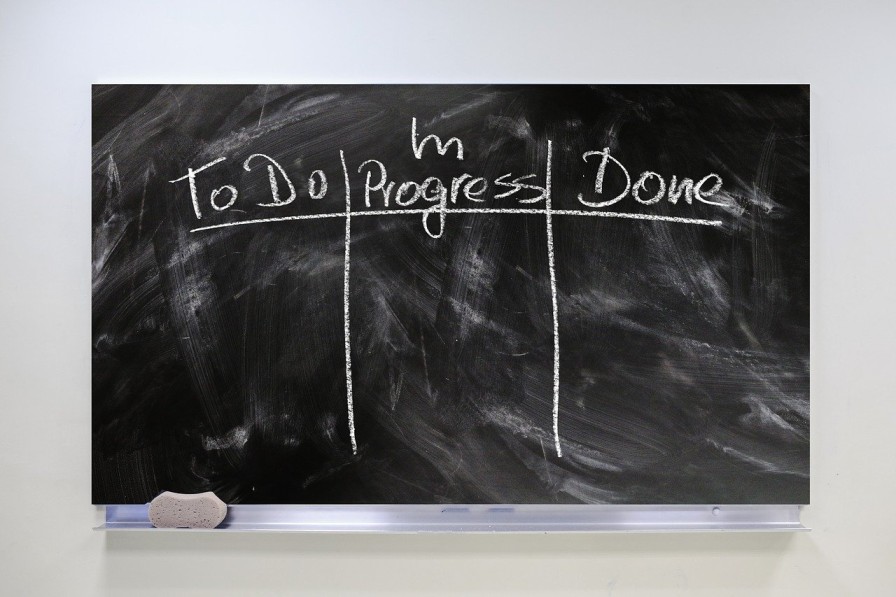
Product Backlog vs Sprint Backlog: Learn the Differences
I was browsing my LinkedIn feed today when I stumbled upon a poll with a very simple question: “Who owns the Sprint Backlog?”. Surprisingly, even though the poll was posted on one of the largest Agile groups on LinkedIn (with over 250,000 members), it turned out that more than half of the respondents got the answer wrong.
Meanwhile on LinkedIn, in a popular #Agile group with +250K members…
I just realized how many folks still struggle to grasp the key differences between product and sprint backlogs. pic.twitter.com/9S2oWQFliS
— Manfredi | Delivery Management 🎯 (@deliverymgt) August 24, 2023
This really caught me off guard and prompted me to dedicate a more detailed article on this topic, even though we briefly covered this already in a previous post.
While both backlogs play crucial roles in agile development, they serve very different purposes. I want to clear up any misconceptions out there and explain, in no uncertain terms, why the product owner owns the product backlog while the development team owns the sprint backlog.
What is a Product Backlog?
A product backlog is the master list of everything that needs to be developed for a product. In other words, it is the single source of truth when it comes to what needs built for the product.
It details all the new features, changes, enhancements, bug fixes, and other activities that would add value to the product. The product backlog is dynamic and evolves over time as new items are added and priorities shuffle.
It is owned and managed by the product owner, as the PO is responsible for prioritizing the backlog items to align with business needs and goals. These items are ordered based on importance, with the ones providing the most value at the top. The lower down an item is on the backlog, the less of a priority it is.
The product owner constantly re-prioritizes the backlog as new information comes to light. They also groom the backlog by rewording unclear items, providing more details, and splitting large items into smaller ones. This ensures the highest priority items are ready for the development team to deliver as efficiently as possible.
Product Backlog: an Example
Let’s imagine a project for the implementation of a new ERP system.
The product backlog will likely contain hundreds of items including new system capabilities to be configured, customizations required, integrations with other systems, workflows to set up, reports to develop, and so on.
The backlog will evolve extensively throughout the implementation as more requirements are uncovered through workshops with business users. Items will be reprioritized regularly by the product owner to balance must-have critical capabilities versus nice-to-have enhancements.
The product owner grooms the backlog frequently, providing more details on high priority items to prepare for upcoming sprints.
What is a Sprint Backlog?
Whereas the product backlog provides the master list of what could be built, the sprint backlog outlines exactly what will be built in a specific sprint.
At the start of each sprint planning session, the highest priority items are moved from the product backlog to the sprint backlog: these are the items the development team commits to complete for that sprint.
The development team owns the sprint backlog, as they have autonomy on how they accomplish the work and how they distribute the tasks across the members.
The team works each day to complete the tasks, providing daily updates on progress. The sprint backlog represents the development team’s plan to meet the sprint goal and deliver a potentially releasable increment of the product.
The sprint backlog is a short-term, high-focus plan owned by the team. This complements the product backlog’s long-term, evolving vision owned by the product owner.
Sprint Backlog: an Example
Back to the example of the ERP implementation, let’s imagine that the priority for the upcoming sprint is the configuration of the purchase order approval workflow.
The related items will be moved from the top of the product backlog into the sprint backlog to provide a detailed plan for that specific iteration. Then, the development team will distributes these items to the team members based on skills and capacity.
The sprint backlog is updated daily reflecting progress. The development team owns the sprint backlog and self-organizes to complete alltasks within the sprint timebox.
Comparing Product and Sprint Backlogs
Now that we’ve covered the basics of product and sprint backlogs independently, let’s recap the key differences between the two.
While both backlogs play integral roles in agile frameworks, they serve unique purposes.
The product backlog:
- Communicates the long-term vision for the product.
- It’s a dynamic list owned by the product owner that outlines all desired enhancements and changes.
- Evolves over time as the product roadmap adjusts.
- Is owned by the product owner, who prioritizes the product backlog as business needs change.
On the other hand, the sprint backlog:
- Represents the development team’s short-term plan for one sprint.
- It contains granular tasks to complete specific backlog items selected for that sprint.
- Is time-boxed and locked for one sprint.
- Is owned by the development team, who assigns tasks based on skills and capacity.
Conclusion
The product backlog and sprint backlog serve complementary yet distinct purposes in agile development.
While some confusion exists, it’s important to recognize the product owner owns the product backlog as the voice of the customer. Meanwhile, the development team owns the sprint backlog, deciding how to accomplish the work each iteration.
Understanding the unique focus and ownership of these artifacts allows for effective collaboration and delivery.
Share this article if you found it useful in clarifying the key differences!
Italian cloud computing professional with a strong background in project management & several years of international experience in business consulting. His expertise lies in bridging the gap between business stakeholders & developers, ensuring seamless project delivery. During his free time, he enjoys fatherhood and immersing himself in nature.


